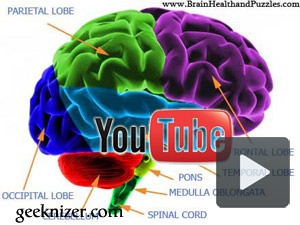 You must have seen several Sci-fi movies where the bad guy makes the superhero sit in an oscillator and capture his past events from his brain. It may look like a distant dream but the first step has actually been taken.
You must have seen several Sci-fi movies where the bad guy makes the superhero sit in an oscillator and capture his past events from his brain. It may look like a distant dream but the first step has actually been taken.
Scientists at UC Berkeley have developed a system to capture visual activity in human brains and reconstruct it as digital video clips. Soon, this advancement would make it possible to record and reconstruct your own dreams on an ordinary computer.
Its not April 1st, and this is happening for Real. Professor Jack Gallant—UC Berkeley neuroscientist and coauthor of the research said today:
“this is a major leap toward reconstructing internal imagery. We are opening a window into the movies in our minds.”
How Brain Image Mapping Works
They used three different subjects for the experiments— They were kept under functional Magnetic Resonance Imaging system for hours at a time. Subjects were prone to two different groups of Hollywood movie trailers as the fMRI system recorded the brain’s blood flow through their brains’ visual cortex. These magnetic readings were then fed into a computer program in which they were divided into three-dimensional pixels units called voxels (volumetric pixels). This process effectively decodes the brain signals generated by moving pictures, connecting the shape and motion information from the movies to specific brain actions.
Computer learned more and more about how the visual activity presented on the screen corresponded to the brain activity and finally was able to create a decent correlation between video being shown to suspect and magnetic radiation being captured from human brain.
Machine Learning: The computer analyzed 18 million seconds of random YouTube video, building a database of potential brain activity for each clip. From all these videos, the software picked the one hundred clips that caused a brain activity more similar to the ones the subject watched, combining them into one final movie. Although the resulting video is low resolution and blurry, it clearly matched the actual clips watched by the subjects.
This is how it learns: It analyzes how the brain reacts to certain stimuli, compares it to the brain reactions to the 18-million-second palette, and picks what more closely matches those brain reactions. Then it combines the clips into a new one that duplicates what the subject was seeing. Notice that the 18 million seconds of motion video are not what the subject is seeing. They are random bits used just to compose the brain image.
The Result: Given a big enough database of video material and enough computing power, the system would be able to re-create any images in your brain.
As of now, the resulting quality is not good, but the potential is enormous.
Our natural visual experience is like watching a movie. In order for this technology to have wide applicability, we must understand how the brain processes these dynamic visual experiences.
The Future of Brain Recording
Imagine that. Capturing your visual memories, your dreams, the wild ramblings of your imagination into a video that you and others can watch with your own eyes. Perhaps one day you would be able to wakeup in the morning and playback your Dream.
We write about Google, Twitter, Security, Open Source, Programming, Web, Apple, iPhone, Android and latest in Tech @geeknizer on Twitter or by subscribing below:
loading...
loading...
